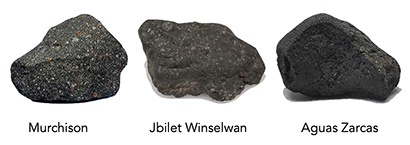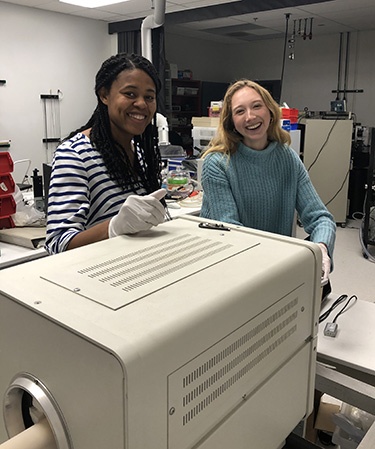Since they were formed in the early solar system, many meteorites offer an unadulterated view into what that solar system was made out of, or what happened to it as we reported before. Recently a team of researchers led by Maggie Thompson at University of California Santa Cruz (UCSC) took a look at the chemical composition of three different chondritic meteorites, which have largely been untouched since before the planets were formed. Their composition was different than current models predicted, and could lead to a better understanding of early planetary atmospheres.
Previous models of solar system formation used different processes to account for the formation of atmospheres on gas giants and rocky planets. Gas giants were thought to be formed primarily of the hydrogen and helium that the sun was made out of. Alternatively, the atmospheres of rocky planets such as Earth were though to be caused by outgassing of the collected asteroids that they were formed of. The problem was so far no one had actually looked to see if asteroids contained the right material to confirm this theory.
Credit: Astronomy on Tap Santa Cruz YouTube Channel
To check for that material, the team used a technique similar to what Perseverance is currently doing on Mars with its laser – they baked the meteorites in order to outgas their constituent chemicals and then analyzed the released gases with a mass spectrometer. In this particular case, they heated the meteorites to 1200 C – much hotter than most conventional ovens would go. Many of the materials they found being released at these high temperatures are common on Earth today – carbon dioxide, carbon monoxide, and hydrogen / hydrogen sulfide. But importantly the most common molecule was water.
The type of meteorite obviously matters a lot when analyzing these gaseous outbursts, and the team analyzed pieces of three different chondritic meteorites – Aguas Zarcas, which was found in Costa Rica in 2019, Murchison, which was found in Australia in 1969, and Jbilet Winselwan, which was found in the Western Sahara in 2013. Chondritic meteorites are important because they are the best approximation for the material available when the sun and planets formed. They are also considered stable as they likely were not melted during their early years.

Credit: Maggie Thompson
A few models were confirmed by this series of experiments. First, the idea that outgassing of asteroids played a major role in the formation of early planetary atmospheres was at least partially confirmed. In addition, chemical equilibrium models of what was thought to be in the meteorites did predict the observed outgassing. Other researchers had also used the same methodology of testing meteorites in an oven before. But this was the first time the focus of the research had been on the implications of outgassing for planetary and early solar system formation.

Credit: Jeremy Colvin
It won’t be the last time however. The team at UCSC plans to do some more testing on “a wide variety of meteorites” says Thompson. The more data is collected the better constraints scientists can put on those formation processes. There are still plenty of meteorites to hunt down and study.
Learn More:
UCSC – Baked meteorites yield clues to planetary atmospheres
Nature Astronomy – Composition of terrestrial exoplanet atmospheres from meteorite outgassing experiments
Space.com – Scientists baked meteorites in an oven to investigate the atmospheres of alien planets
News18 – US Scientists Literally Baked Meteorites in a Lab to Recreate the Formation of Planets
UT – Meteorite Tells Us About Water on Mars 4.4 Billion Years Ago
Lead Image:
Illustration of an early rocky planet with outgassing forming at atmosphere.
Credit: Dan Dura / Southwest Research Institute

